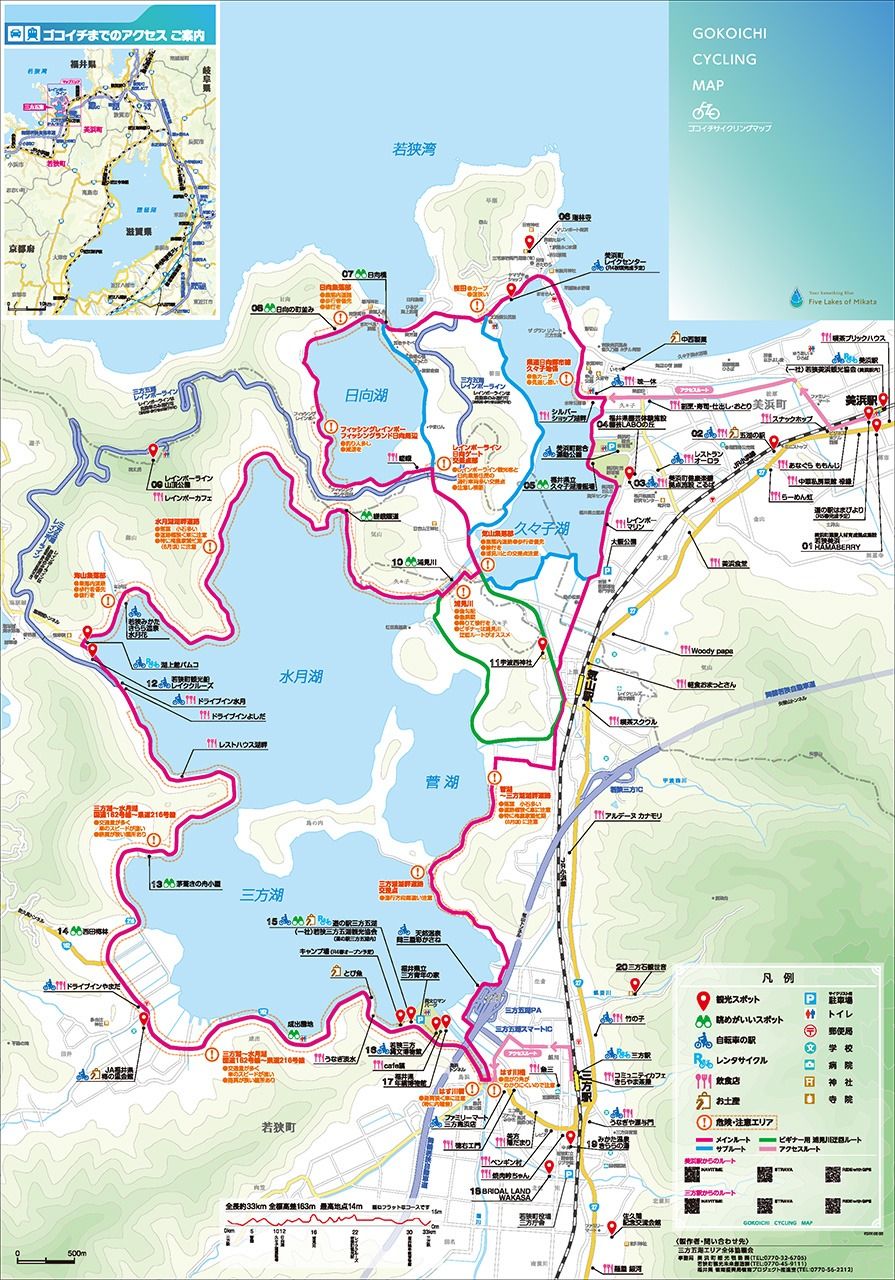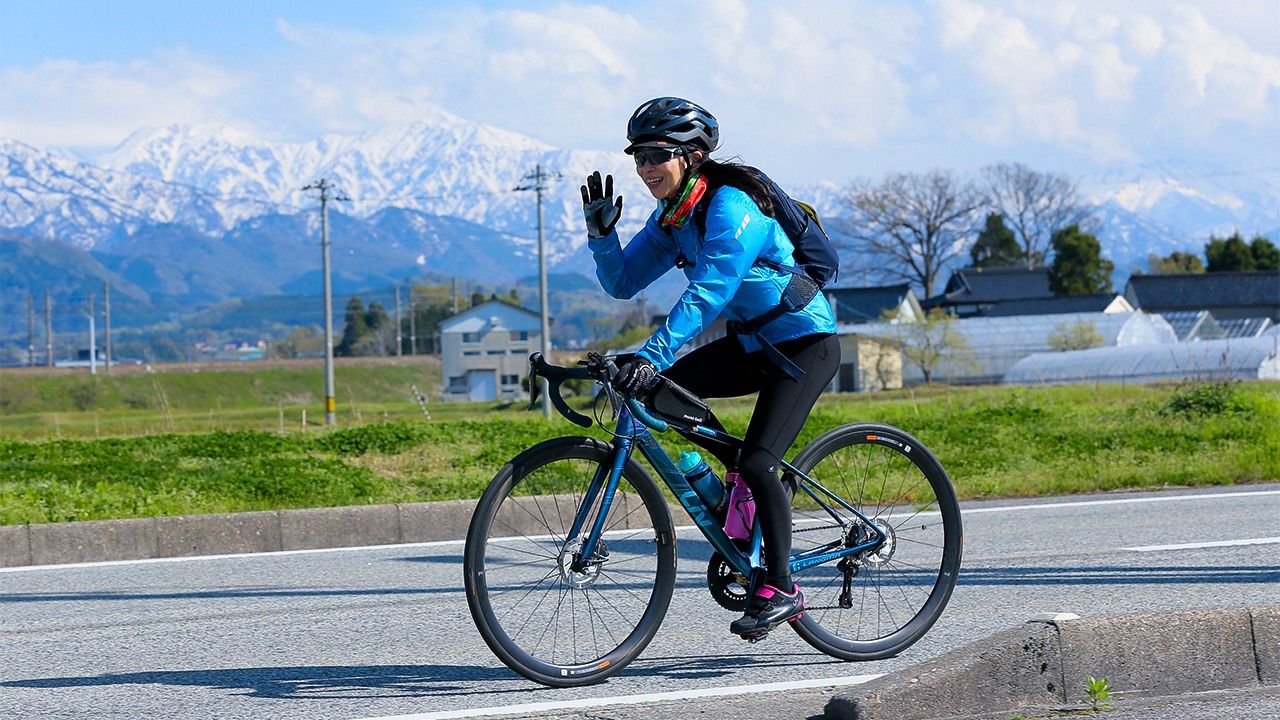
Hokuriku Prefectures Kicking Cycling Tourism into Higher Gear
Travel- English
- 日本語
- 简体字
- 繁體字
- Français
- Español
- العربية
- Русский
Cycling Tourism an International Boom
The three Hokuriku prefectures stretch along the Sea of Japan coast far from Tokyo, but the opening of the Hokuriku Shinkansen line between Tokyo and Kanazawa in 2015 made the region much more accessible to the metropolitan area. The route from Kanazawa, Ishikawa Prefecture, to Tsuruga in Fukui Prefecture is scheduled to open in 2023, and is bound to boost Hokuriku’s popularity even further.
In Japan’s popular imagination, the Hokuriku name brings to mind relaxing hot-spring soaks, with a cup of sake in one hand and delicious seafood like crabs and shrimp within easy reach. At the same time, though, many people might also think of gray skies, the rough waves of the Sea of Japan crashing against the shore, and heavily falling snow.
The three prefectures of the region, though, are challenging those preconceptions with a focus on cycling as they look to promote tourism in the post-COVID-19 period. The pandemic has driven an increase in cycling as a good way to avoid close contact with others and improve health at the same time, a development these governments are ready to capitalize on.
Cycling tourism has already become popular in many parts of the world. Taiwan in particular, where my family is from, saw a major boom in cycling tourism with the Huan Dao route going all around the main island. With that trend in the background, the Hokuriku prefectures are hoping that cycling will be a useful way to boost new inbound tourism.
Potential of the Noto Peninsula
I myself cycled all over Hokuriku in October and November 2022. I somehow managed to complete the Tour de Noto 400—a three-day, 400-kilometer race around the Noto Peninsula in Ishikawa Prefecture—as one of around 600 competitors. I also helped with trial runs of recommended courses for cycling tourism along the Noto Peninsula and the Kaga district in Ishikawa Prefecture in response to requests from local communities looking to promote the activity.

The author riding in the Tour de Noto 400. (© Hitoto Tae)
The Noto Peninsula tourist course is about 25 kilometers long and based out of Roadside Station Wajima. It takes riders to Kamogaura at the tip of Cape Wajima, which juts far out to sea; the Wajima morning market, which has more than 1,000 years of history; the Wajima Kiriko Art Museum, which exhibits kiriko cut glass works from the Noto region; and the Shiroyone Senmaida terraced rice fields on a slope leading down to the sea. There is a special app riders can download to navigate the recommended course. The distance is neither too long nor too short, and there are both electric-assist and sport bikes available to rent. Other courses feature lovely towns like Anamizu, Nanao, and Hakui, as well.
Secondary transport—ways to get from airports or train stations out to tourist destinations—is still lacking on the Noto Peninsula, so there are lots of places that people struggle to reach even if they want to visit. If towns can successfully coordinate cycling plans, though, the area has ample potential for this new style of travel.
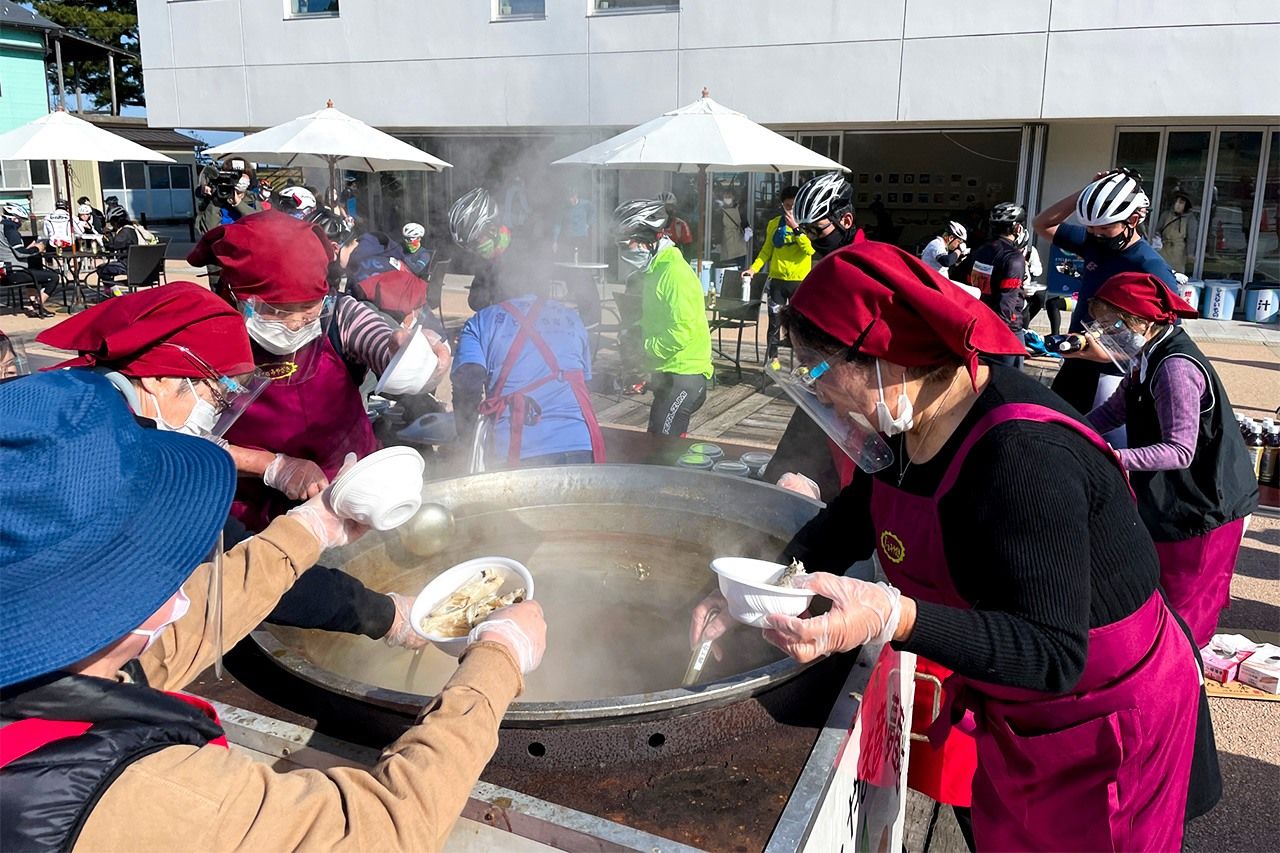
Piping-hot cod soup served at the Asahi-machi Aid Station for the Toyama Bay Cycling race. (© Hitoto Tae)
In Kaga, I participated in a test run sponsored by the Hakusan Geo-ride Promotion Council. The city of Hakusan, unhappy with the fact that it was not given a stop on the Shinkansen line between Kanazawa and Fukui, is working on a unique cycling tourism program using existing tourist resources. For example, I rode the Tedori Canyon Road, a course of around 20 kilometers that follows a decommissioned track from the old Hokuriku Rail Road.
The Hokuriku Railways Ishikawa Line has also started running cycling trains, which allow bikes to be brought onboard without need for a reservation—a welcome service. A 30-minute, 14-kilometer train ride from Nomachi Station, the starting point in Kanazawa, takes you to Tsurugi Station, the last stop in Hakusan, Ishikawa, which is right by the entrance to the Tedori Canyon Road.
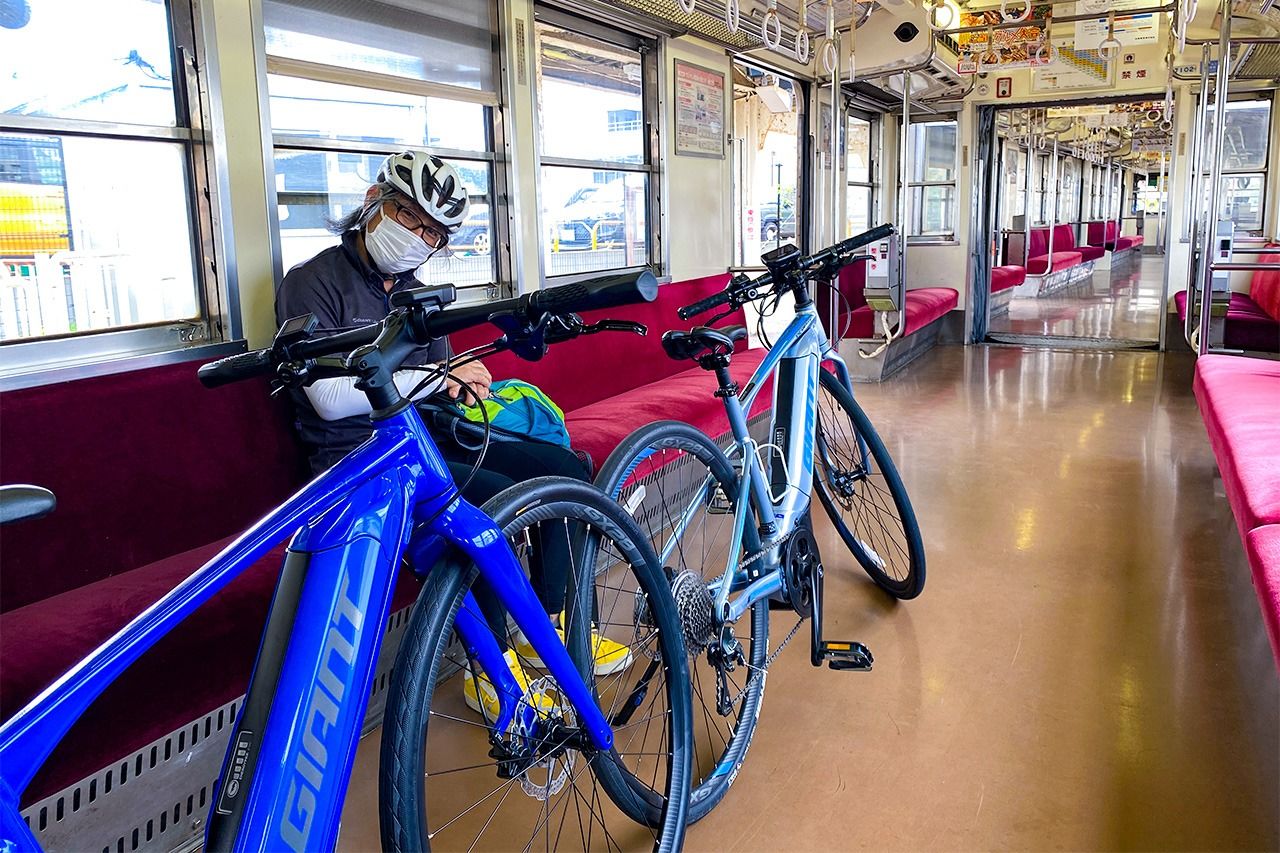
The Hokuriku Railway Ishikawa Line allows bikes onboard. (© Hitoto Tae)
Toyama Leads the Way
I rode Toyama at the end of October. The Toyama Bay Cycling Route has been designated as a national cycle route, and is now the most lively of the Hokuriku courses. The southern starting point is at Himi, near the border with Ishikawa, and riding north along Toyama Bay brings you to the finish point at the Niigata border. The annual Toyama Bay Cycling event covers a round-trip ride of this course, with gorgeous views of both the bay itself and the majestic Tateyama mountain range, and is growing ever more popular.
In 2014, Toyama Bay was added to UNESCO’s Most Beautiful Bays in the World Club, and this event started when the seven cities and two towns along Toyama Bay established a course to mark that event. The longest course, from Himi to Asahi, is a round trip of 180 kilometers; it has to be round trip because, unlike a lake route, it cannot make a complete circuit. I chose a 130-kilometer course, from Imizu to Asahi and back.
That course takes you over the Shin-minato Ōhashi, a bridge rising 50 meters above the city of Imizu, with a walkway offering beautiful views of the surroundings. It is unfortunate that most cyclists are unfamiliar with this bridge, even though it was designed to let them walk their bikes across to board the ferry at the other end. There is also a cycling train available, but it is somewhat inconvenient as reservations are required and service limited to fixed days of the week. The city also has few bike rental shops, so there is still room for improvement.
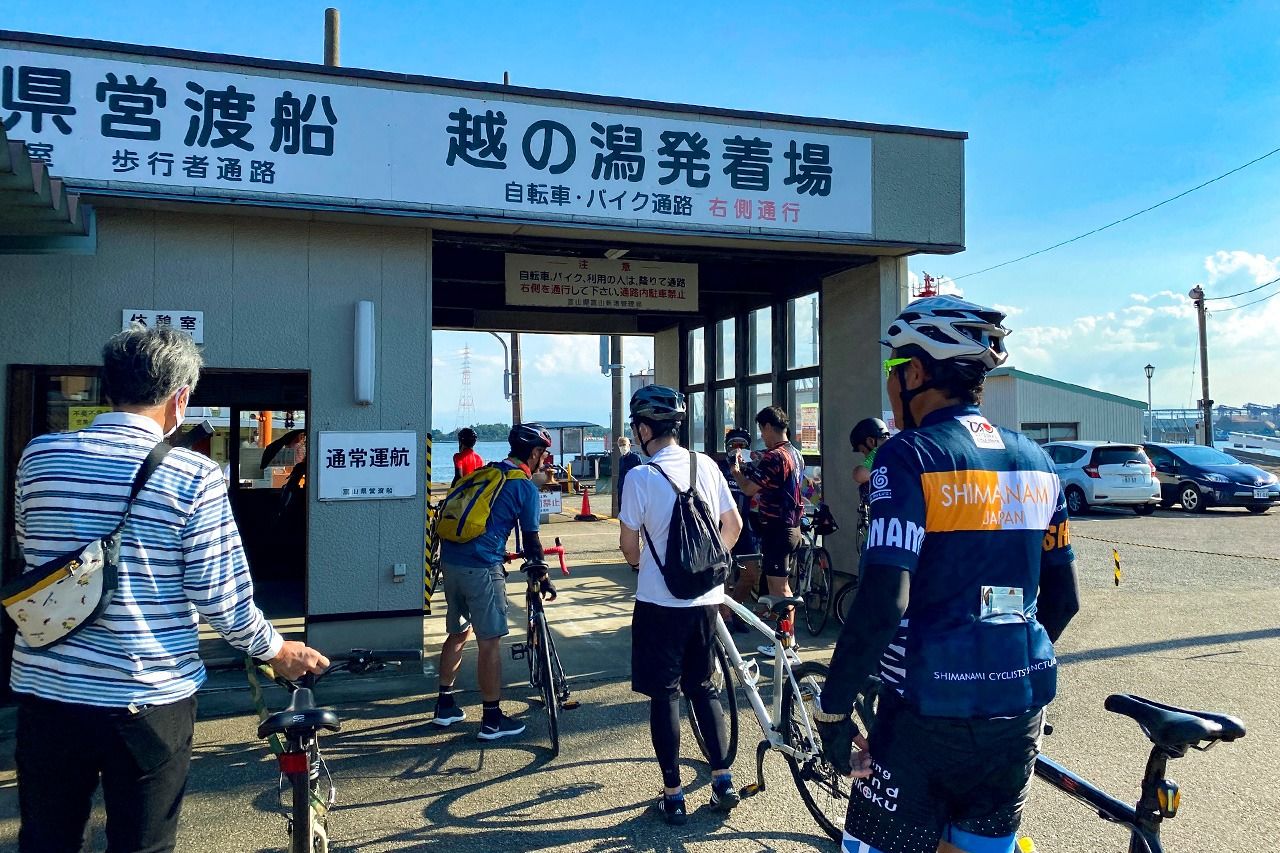
The Toyama Prefectural Ferry landing near the Shin-minato Ōhashi. (© Hitoto Tae)
Toyama has a great many interesting tourist destinations like the Tateyama Kurobe Alpine Route; Japan’s highest train station of Murodō, at 2,450 meters above sea level; Japan’s tallest dam, Kurobe Dam; late-spring snow corridors with walls of snow 20 meters high; and the thatched roof villages of the Gokayama world heritage site. The seas are also full of delicious seafood like yellowtail, firefly squid, shrimp, and eelpouts. Combining these kinds of sightseeing spots and Toyama’s delicacies with cycling tourism would be adding strength to strength.
Fukui Aims for National Recognition
Fukui is also seeking to match Toyama by getting a national cycling route designation. Japan established this system to recognize national cycle routes that can represent Japan positively on the global stage. So far, there are six such routes, including the Shimanami Kaidō connecting Onomichi, Hiroshima, with Imabari, Ehime, and the Biwaichi route around Lake Biwa. The designation brings an immediate boost in awareness and attracts more people to events, which can lead to numerous secondary benefits, explaining why communities all over Japan are eager for official recognition.
Fukui Prefecture is now pushing the Gokoichi route, which goes around five lakes in the Mikata area near Wakasa Bay. The overall length is 42 kilometers. It’s not a difficult course, even for beginners, despite lots or elevation changes. It also has the Wakasa Kaidō, a route heading south from Obama on Wakasa Bay to Kyoto, leading through the former Wakasa no Kuni region. The area was once a major source of saba, or mackerel, so the route is also known as the Saba Kaidō, or “mackerel way.” Officials are now putting together courses to appeal to everyone from families to hard-core cyclists based around the idea of long-distance Saba Kaidō cycling connecting the Kyoto and Shiga areas.
A Single Route to Unite the Region?
One of the Japanese government’s designated national cycle routes is the Pacific Coast Cycling Road. This is a roughly 1,200-kilometer route leading from Chōshi, Chiba, to the Kada coast in Wakayama. In point of fact, many sections of this route are still unfinished, but it’s a route that can also reward gradual completion in stages, spread out over several attempts.
One potentially similar route crossing the three Hokuriku prefectures could start from Asahi, at the northern edge of Toyama, then tour the Noto Peninsula and pass through Kanazawa and Kaga to end up at Takahama, Fukui. This would be a roughly 600-kilometer course along the coastlines of all three prefectures. It could be named something like the Hokuriku Sea of Japan Bicycle Road, and would be a wonderful way for cyclists to experience this coastline, with all its regional varieties of climate, cuisine, and scenery.
At a recent roundtable talk between the governors of Toyama and Ishikawa, they discussed the idea of selling a shared rail pass covering train lines in the region’s three prefectures and cooperating in running a joint sightseeing train service. This represents a new stage of collaboration among the three prefectures—indeed, one that might have been expected sooner, given the long-established Hokuriku identity. With the Shinkansen line now in place, these local administrations can work on promoting cycling tourism as a united team, helping to attract even more tourists, domestic and international both, to the area.
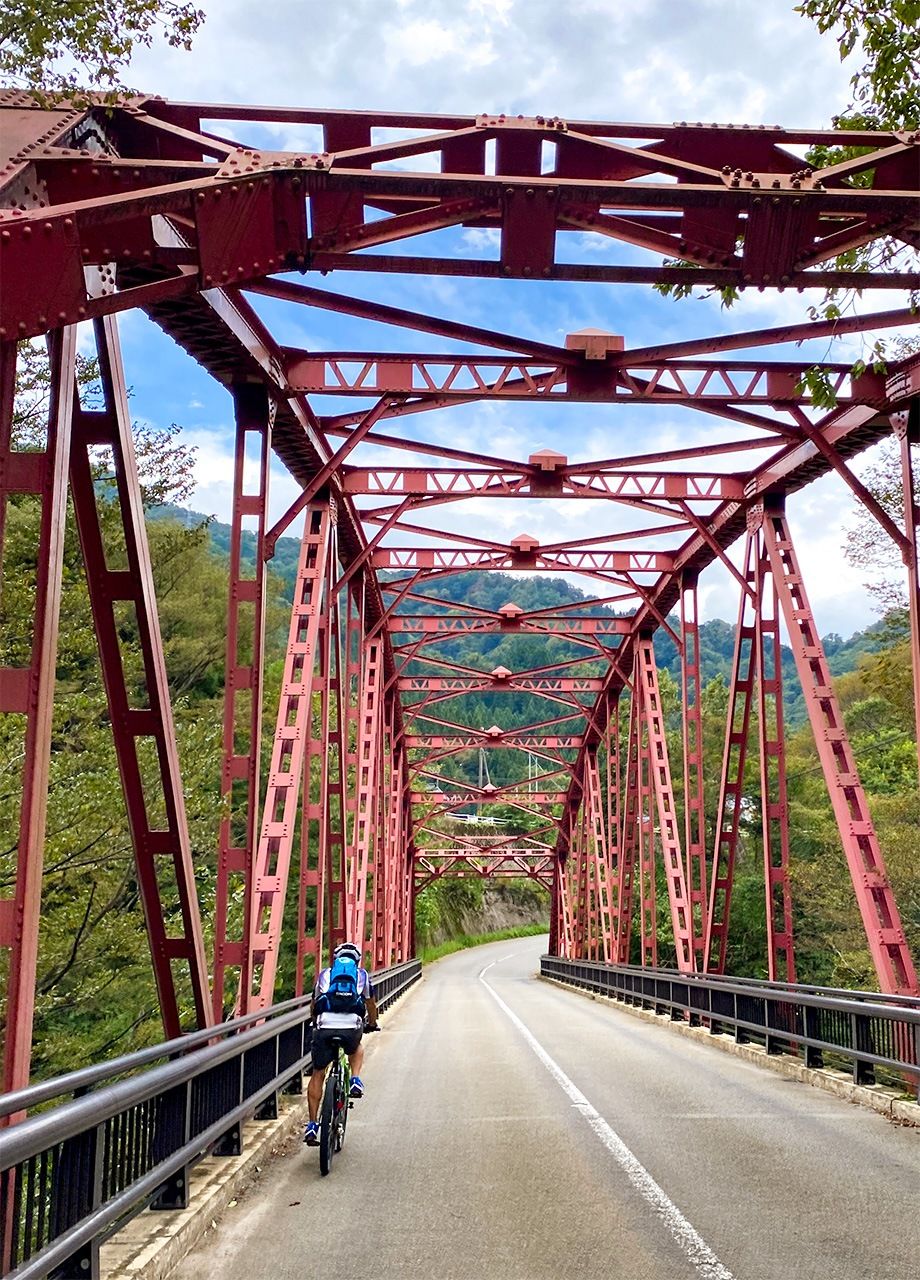
Riding across Tedori Canyon Road’s Taizan Bridge. (© Hitoto Tae)
For Health and Friendship
King Liu, founder of the Taiwanese bicycle manufacturer Giant and a powerful force in making Taiwan a cycling tourism pioneer, has said that cycling culture is one of health, friendship, and better living. Tourism by bike helps expand the range of daily exploration and forgives a certain level of unrestrained eating, even of sweets or calorie-rich food. For me, someone who’s naturally curious and a foodie as well, cycling helps satisfy on both counts. But above all, biking is fun, energizes body and spirit, and is a natural way to meet people and make connections with other riders.
I hope that the three Hokuriku prefectures will not only focus on the immediate economic benefits of tourism through cycling, but also have a long-term vision for the wellbeing of both tourists and local residents. And I also offer my sincere wishes for these three prefectures to become the new faces for cycling tourism in Japan.
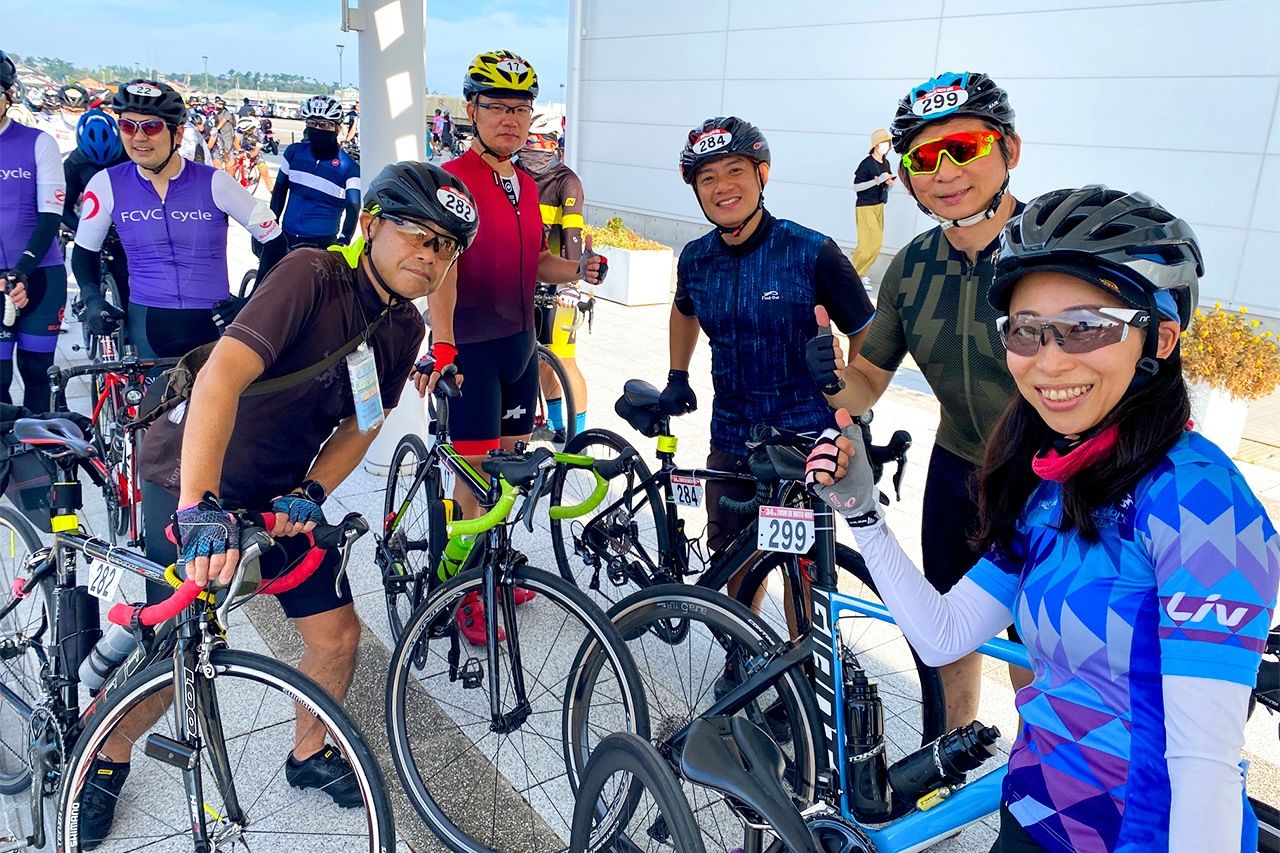
The author, at right, with cyclists joining in from Taiwan. (© Hitoto Tae)
(Originally published in Japanese. Banner photo: The author riding in Ishikawa Prefecture. All photos © Hitoto Tae.)
Shinkansen Toyama Ishikawa tourism Hokuriku Taiwan Fukui Cycling
